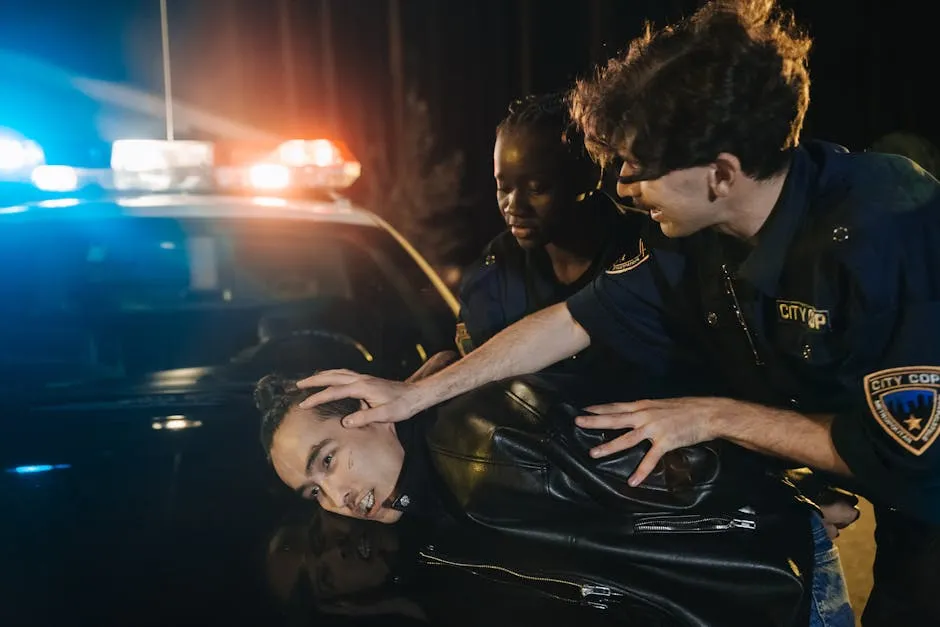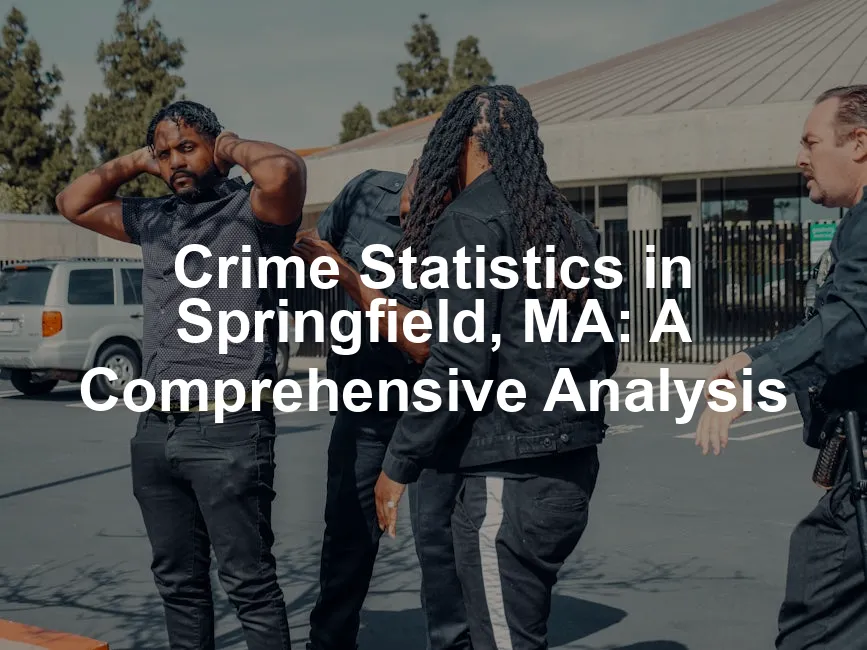Introduction
Springfield, Massachusetts, is a city steeped in history and significance. Nestled in the Pioneer Valley, it serves as a cultural and educational hub. Known as the birthplace of basketball, Springfield is home to a rich tapestry of parks, museums, and diverse neighborhoods. However, like many urban areas, it grapples with crime-related issues that affect its residents.
Understanding crime statistics is crucial for anyone residing in or considering a move to Springfield. For families, safety is paramount. Potential movers often seek areas with lower crime rates, while local policymakers use this data to develop effective crime reduction strategies. This article will focus on crime data from 2022, comparing it with recent years to identify trends and shifts.
Imagine this: you’re a parent contemplating a new home in Springfield. You want to ensure your kids can play outside without worry. Or perhaps you’re an investor eyeing property values. A spike in crime could significantly impact your investment. These scenarios underscore the importance of being informed about crime statistics.
In the following sections, we’ll break down historical trends and recent statistics to provide a clearer picture of crime in Springfield. Whether you’re a resident, a prospective buyer, or a policymaker, this analysis will arm you with the knowledge you need to make informed decisions.

Crime Overview in Springfield, MA
Historical Context
Over the past decade, Springfield has experienced fluctuating crime rates. Historically, the city has faced challenges with both violent and property crimes. However, recent years show signs of change. From 2012 to 2021, crime rates indicated a general decline in violent offenses, reflecting efforts from law enforcement and community programs.
When comparing crime rates from 2021 to 2022, the statistics reveal some intriguing insights. In 2022, violent crimes reached 1,337 incidents, with a slight decrease from the previous year. This downward trend is encouraging, but it remains essential to understand the broader context of these figures.
Property crimes, too, have fluctuated. In 2022, Springfield recorded 3,674 property crimes, slightly down from 3,697 in 2021. Though these numbers reflect a minor reduction, they still highlight the ongoing issues residents face. The city’s overall crime rate remains higher than both state and national averages, emphasizing the need for continued vigilance and community engagement.
With this historical lens, it’s clear that Springfield’s crime landscape is complex. Understanding these patterns helps residents gauge safety and informs local authorities’ strategies for improvement. The data from 2022 provides a crucial snapshot of the current situation, allowing for a more informed discussion on safety and community well-being.
As we move forward, we’ll delve deeper into the specifics of crime rates in Springfield, focusing on both violent and property crimes. The aim is to provide a comprehensive overview that empowers residents and policymakers alike.

Current Crime Statistics
Overview of Overall Crime Rate
Springfield, MA, has a crime rate of 33 per 1,000 residents, which is higher than both the state and national averages. The violent crime rate stands at 862 incidents per 100,000 residents, significantly outpacing Massachusetts’ average of 311 and the national median of 322. This makes Springfield one of the more dangerous cities in the United States.
When it comes to property crimes, Springfield records 24 incidents per 1,000 residents, again above the national average of 19. The city’s overall crime rate indicates that residents should stay informed and vigilant about their surroundings.

Victimization Statistics
Your chances of becoming a victim of crime in Springfield? Brace yourself! It’s about 1 in 31 for any crime, 1 in 115 for violent crime, and 1 in 42 for property crime. In comparison, the likelihood of being a victim of violent crime in Massachusetts is much lower, at about 1 in 311. This stark contrast highlights the challenges Springfield faces in maintaining a safe environment for its residents.
Understanding these statistics isn’t just for the safety-conscious; it’s essential for families considering a move, investors eyeing property, or policymakers seeking to implement effective crime reduction strategies. The numbers don’t lie: Springfield has a crime landscape that demands attention and proactive measures.

To dive deeper into the realities of crime, consider reading “Crime and Punishment” by Fyodor Dostoevsky. This classic novel delves into the mind of a troubled individual grappling with morality, crime, and the consequences of one’s actions. It’s a profound read that might give you insights into the psychological aspects of crime.
For a deeper understanding of how sports statistics can reflect broader societal trends, check out Matt Moore LLC: Analyzing Dallas SMU Sports Statistics.

Neighborhood Crime Rates
High Crime Areas
Springfield has neighborhoods that come with a warning label. Metro Center and Bay are the notorious hotspots for crime in the city. If you’re thinking about a stroll, you might want to save those areas for daylight and a large group. Metro Center, with its vibrant nightlife, seems to attract more than just partygoers. Bay, on the other hand, has a reputation that makes one think twice before wandering alone.

Safer Neighborhoods
On the flip side, East Forest Park and Sixteen Acres are the neighborhoods where you can breathe a little easier. These areas boast lower crime rates and a strong sense of community. Families often find solace in East Forest Park, where children can play outside without the lurking shadows of danger. Sixteen Acres, with its friendly neighbors and parks, is another gem in Springfield, offering a welcoming atmosphere that makes it perfect for settling down.
To further enhance your home security, consider investing in a Home Security System. This will not only give you peace of mind but also help deter potential intruders.

Crime Risk Analysis and Public Perception
Crime Risk Index
Let’s talk about the Crime Risk Index. This handy tool measures the safety of Springfield on a scale from 1 to 100. Higher scores indicate safer areas, while lower scores scream “watch your back!” Springfield’s average crime risk is higher than many American cities, which might make you reconsider your evening jog. The index is calculated based on various factors, including violent crime rates, property crimes, and local law enforcement presence. It’s essential for potential residents to understand this index, as it reflects both the city’s challenges and community efforts to improve safety.

Community Sentiments
Local polls reveal a stark difference between perception and reality. In a recent survey, only 16% of respondents felt safe walking alone at night in Springfield. That’s right—84% of locals are on high alert, feeling the weight of the city’s reputation. This disconnect between how safe residents feel and the actual crime statistics can erode trust in the community. When people don’t feel secure, it impacts everything from neighborhood watch programs to local businesses.
In fact, while the crime statistics indicate a slight decrease in crime rates from the previous year, the public sentiment doesn’t always align. Many residents believe crime is on the rise, leading to a palpable tension in the community. This gap between perception and reality highlights the importance of ongoing education and communication from local law enforcement to rebuild trust and ensure residents feel safe in their neighborhoods.
Ultimately, understanding these dynamics is crucial for anyone looking to move to Springfield. With the right information, potential residents can make informed decisions about their safety and community involvement.

Trends and Future Projections
Year-over-Year Changes
Recent Changes in Crime Rates
Crime rates in Springfield, MA, have shown some interesting shifts between 2021 and 2022. Violent crimes saw a slight decrease, dropping from 1,339 incidents to 1,337. This minor decline of about 0.15% might not seem like much, but every little bit counts, especially when you consider how many lives are impacted by crime. Property crimes also experienced a slight dip, falling from 3,697 in 2021 to 3,674 in 2022, a reduction of roughly 0.62%.
However, while these figures are encouraging, they still paint a picture of a city grappling with crime challenges. Springfield’s violent crime rate remains significantly above both state and national averages, at 862 incidents per 100,000 residents. In contrast, Massachusetts averages 311, and the national figure is 322. This gap highlights an ongoing struggle that needs continued attention.

To understand the wider implications of crime, consider reading “The New Jim Crow: Mass Incarceration in the Age of Colorblindness” by Michelle Alexander. This book explores the systemic issues surrounding incarceration and its impact on communities.
Long-Term Trends
When we zoom out and look at the long-term trends, the picture becomes a bit clearer. Over the past decade, Springfield’s crime rates have fluctuated, reflecting broader social and economic changes.
Factors such as economic strain, housing affordability, and community engagement play a vital role in these trends.
For instance, the rise in violent crime from 2019 to 2020 indicates potential societal stresses. However, the gradual decline in crime rates from 2020 to 2022 suggests that community and law enforcement initiatives may be making a difference. Despite the ups and downs, the overall trajectory appears to be cautiously optimistic.

Community and Law Enforcement Initiatives
Programs and Strategies
Local law enforcement in Springfield is actively working to combat crime through various initiatives. The Springfield Police Department has implemented community policing strategies, focusing on building trust and cooperation with residents. These programs aim to create a safer environment by encouraging community involvement and dialogue.
In addition, the city has started using predictive policing technologies to identify high-risk areas and allocate resources more effectively. This approach allows officers to be present in communities that need it most, potentially deterring crime before it occurs.
Moreover, neighborhood watch programs have gained traction, empowering residents to take an active role in their safety. The collaboration between citizens and law enforcement fosters a sense of community and shared responsibility, which is crucial in reducing crime rates.

Community Involvement
Community engagement plays an essential role in improving safety and reducing crime in Springfield. Local organizations and residents are taking initiatives to organize safety workshops and neighborhood meetings. These gatherings not only educate residents about crime prevention but also foster a sense of unity and cooperation among neighbors.
Moreover, social programs aimed at youth engagement have been introduced to provide positive outlets for young people. By offering recreational activities and mentorship opportunities, the city hopes to steer youth away from crime and towards constructive paths.
As Springfield moves forward, the continued emphasis on community involvement and law enforcement collaboration could prove essential in shaping a safer future. The combined efforts of residents and police may ultimately transform the crime landscape, making Springfield a place where families feel secure and communities thrive.
For those interested in the intricacies of crime and justice, check out “Crime and Justice in America: A Comparative Perspective”. This book offers a broader view of crime issues across the nation.

Conclusion
In summary, Springfield, MA, presents a complex crime landscape. The statistics reveal a city grappling with above-average crime rates, particularly in violent and property offenses. Despite the slight decreases observed from 2021 to 2022, Springfield’s crime rates remain a concern for many residents.
Key findings indicate that violent crime decreased marginally, while property crime also saw a slight reduction. However, the overall crime rates are still significantly higher than state and national averages, emphasizing the need for continued vigilance and proactive measures.
The role of community engagement and law enforcement initiatives cannot be overstated. As Springfield continues to implement programs aimed at fostering collaboration, there’s potential for further improvements in safety. Residents are encouraged to participate actively in local initiatives, helping shape a safer community.
Ultimately, understanding crime statistics is vital for residents, potential movers, and policymakers. By staying informed and engaged, the community can work together to address the challenges of crime and create a brighter future for Springfield. Safety is not just the responsibility of law enforcement; it’s a shared commitment that requires everyone’s participation.

Call to Action
Staying informed about crime in Springfield is crucial. Knowledge is power, and knowing what’s happening in your community empowers you to take action. Engage with local safety initiatives to make a difference. Attend neighborhood meetings, join community watch programs, or follow your local police department’s social media.
Your involvement can create a ripple effect, encouraging others to participate. Together, we can foster a safer Springfield. Share crime statistics with friends and neighbors. Your voice matters! Don’t wait for change—be the change.

Final Thoughts
Collaboration between law enforcement and the community is vital in tackling crime. When residents and police work hand in hand, trust builds, and safety improves. Community programs that involve residents in policing efforts have proven effective in many cities.
Springfield can benefit from similar initiatives. By fostering an environment of cooperation and transparency, we can make strides toward reducing crime. Remember, safety is a shared responsibility. Let’s create a Springfield where everyone feels secure and empowered to speak up against crime. Together, we can pave the way for a brighter, safer future.
FAQs
What are the most common types of crime in Springfield, MA?
Springfield struggles with both violent and property crimes. Violent crimes include murder, rape, robbery, and assault. Property crimes cover burglary, theft, and motor vehicle theft. In 2022, there were 1,337 violent crimes and 3,674 property crimes reported. Being aware of these prevalent crime types helps residents stay alert.
How does Springfield’s crime rate compare to other cities in Massachusetts?
Springfield’s crime rates are notably higher than many nearby cities. For instance, the violent crime rate in Springfield stands at 862 incidents per 100,000 residents, while the Massachusetts average is 311. This disparity highlights the city’s ongoing challenges with safety compared to its peers.
What resources are available for Springfield residents concerned about crime?
Residents can access various resources for safety concerns. The Springfield Police Department offers community safety programs and a crime map through CityProtect. Additionally, neighborhood watch groups provide platforms for residents to collaborate on crime prevention. These resources empower the community to take proactive measures.
Are crime rates in Springfield increasing or decreasing?
Recent trends show a decrease in crime rates in Springfield. From 2021 to 2022, violent crime fell slightly by 0.15%, while property crime decreased by 0.62%. Although these reductions are promising, the overall crime rate remains above state and national averages, indicating ongoing challenges.
Encouragement to Engage
Stay informed, participate in community safety events, and collaborate with local police. Your engagement matters! Let’s strengthen our neighborhoods together.
Please let us know what you think about our content by leaving a comment down below!
Thank you for reading till here 🙂
All images from Pexels




